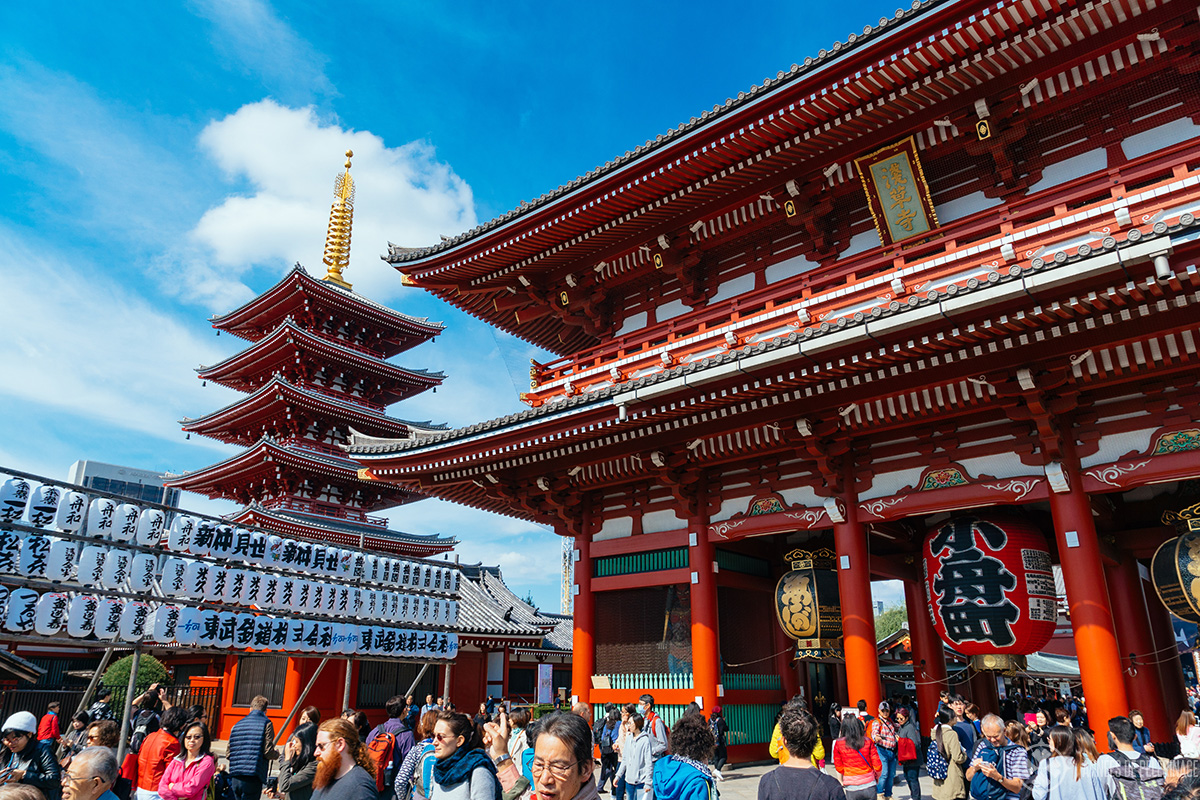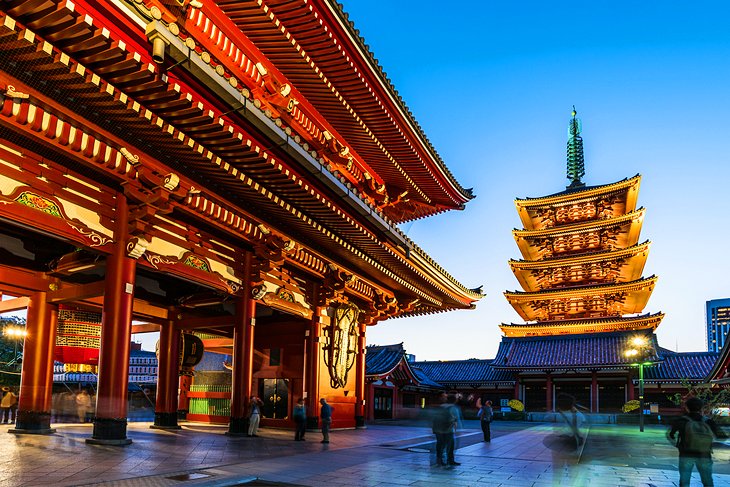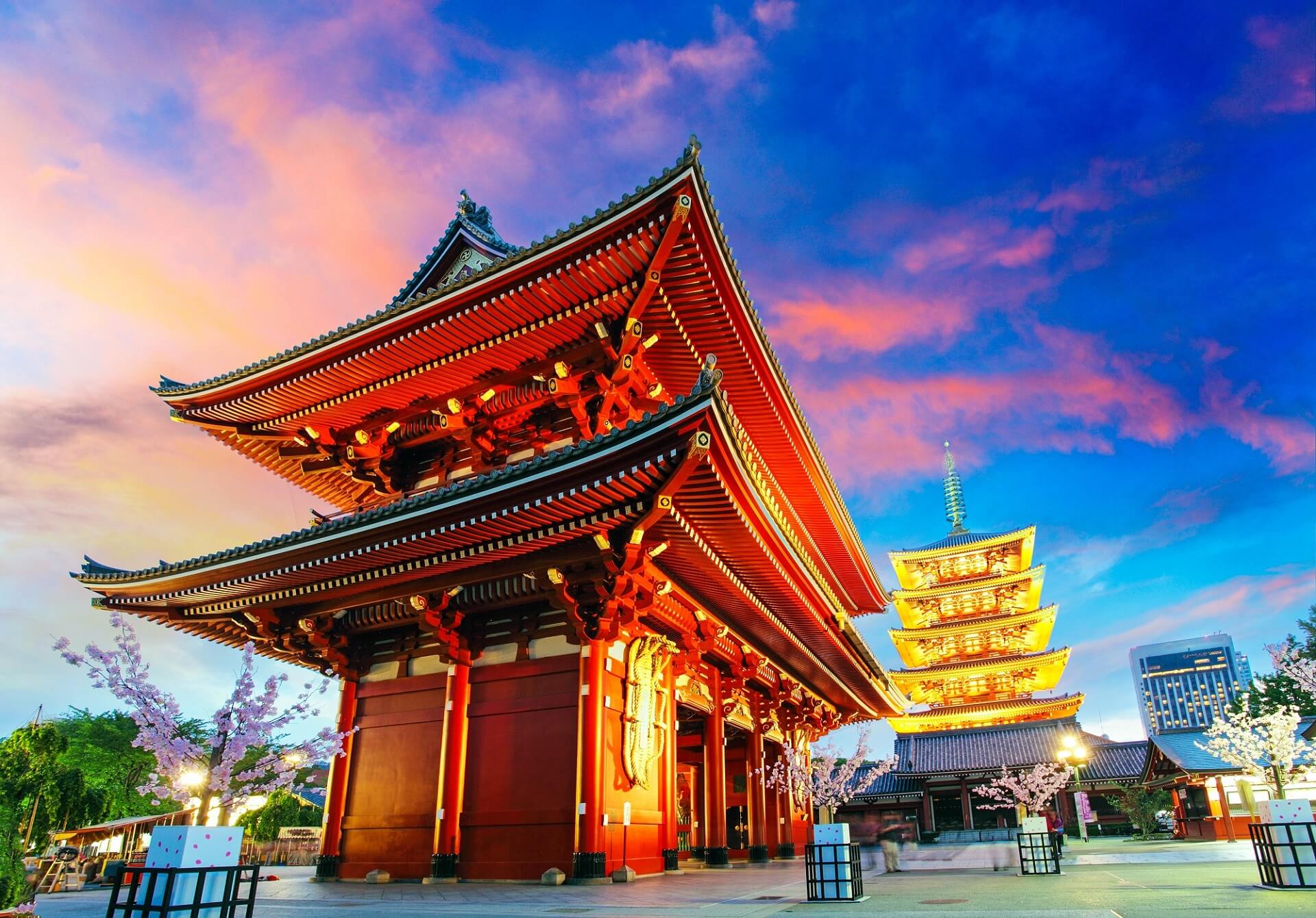
Tokyo, a sprawling metropolis where ancient temples whisper tales of the past amidst the neon glow of futuristic skyscrapers, is a city that captivates the senses and ignites the imagination. It’s a place of stark contrasts, where serene gardens offer respite from bustling streets, and culinary adventures range from Michelin-starred artistry to humble street food delights. For any traveler, Tokyo is an unforgettable experience, a vibrant tapestry woven with threads of history, innovation, and an unparalleled dedication to detail.
This comprehensive guide will take you on a journey through Tokyo’s most iconic attractions, delve into its fascinating history, equip you with essential travel tips, explore accommodation and transportation options, and help you pinpoint the best time to experience this extraordinary city.
A Glimpse into Tokyo’s Storied Past

Related Articles about Tokyo: A Symphony of Tradition and Tomorrow – Your Essential Guide to the City’s Top Attractions:
- Australia: A Journey of Wonders, From Cosmopolitan Cities to Untamed Wilderness, And the Hotels That Elevate the Experience
- Morocco’s Enchanting Tapestry: A Journey Through its Top Attractions and Essential Travel Guide
- Cape Town: A Symphony of Mountains, Sea, and Culture
- Castles, Cobblestones, and Comfort: Unveiling the Best Hotels in the Czech Republic
- Germany: A Tapestry of Timeless Charm and Modern Marvels
Tokyo’s history is a captivating narrative of transformation. Originally a small fishing village named Edo, it rose to prominence in the early 17th century when Tokugawa Ieyasu established his shogunate there, transforming it into the political and administrative center of Japan. For over 250 years, Edo remained the seat of power, fostering a unique culture and a flourishing arts scene.
The Meiji Restoration in 1868 marked a pivotal turning point. The Emperor moved his court from Kyoto to Edo, and the city was renamed Tokyo, meaning "Eastern Capital." This era ushered in rapid modernization and Westernization, laying the groundwork for the metropolis we know today. Despite devastating earthquakes and the ravages of World War II, Tokyo has consistently rebuilt and reinvented itself, emerging as a global leader in technology, fashion, and culture.
Tokyo’s Unmissable Attractions: A Journey Through Iconic Landmarks
Tokyo’s allure lies in its sheer diversity. From serene spiritual sites to vibrant entertainment districts, there’s something to enchant every visitor.
1. Senso-ji Temple (Asakusa): A Glimpse into Old Tokyo
Stepping into Asakusa is like stepping back in time. Senso-ji, Tokyo’s oldest temple, is a magnificent testament to the city’s spiritual heart. Enter through the imposing Kaminarimon Gate (Thunder Gate) with its giant red lantern, and wander down Nakamise-dori, a bustling market street lined with stalls selling traditional crafts, souvenirs, and delicious snacks. The main temple hall and the five-story pagoda are awe-inspiring, offering a tranquil escape from the urban hustle.
2. Tokyo Skytree: Panoramic Vistas of a Megalopolis
For breathtaking, panoramic views of Tokyo and beyond, the Tokyo Skytree is an absolute must. This towering broadcast and observation tower offers two observation decks, providing unparalleled vistas stretching as far as Mount Fuji on clear days. Descend from the heavens to explore the Solamachi shopping and dining complex at its base, offering a vast array of retail and culinary experiences.
3. Shibuya Crossing: The World’s Busiest Intersection

An iconic symbol of modern Tokyo’s energy, Shibuya Crossing is a mesmerizing spectacle. When the traffic lights turn red, pedestrians flood the intersection from all directions in a perfectly choreographed dance. Join the throng, soak in the electrifying atmosphere, and perhaps find a vantage point from a nearby cafe or department store to truly appreciate the organized chaos. The Hachiko statue, a poignant tribute to a loyal dog, is a popular meeting point nearby.
4. Imperial Palace East Garden: A Royal Oasis
The former site of Edo Castle, the Imperial Palace East Garden offers a serene and expansive green space in the heart of the city. While the inner grounds of the Imperial Palace are generally not open to the public (except for guided tours booked in advance), the East Garden allows visitors to explore the remnants of the old castle, including moats, stone walls, and guardhouses, all set amidst beautifully manicured landscapes.
5. Meiji Jingu Shrine: A Tranquil Sanctuary Dedicated to the Emperor and Empress
Nestled within a vast forest, Meiji Jingu Shrine is a peaceful oasis dedicated to Emperor Meiji and Empress Shoken. The approach to the shrine is through a serene forested path, creating a sense of calm and reverence. The shrine itself is a beautiful example of traditional Shinto architecture, and if you’re lucky, you might witness a traditional Shinto wedding procession.
6. Ghibli Museum (Mitaka): A Magical World of Animation
For fans of Studio Ghibli’s enchanting animated films, the Ghibli Museum is a pilgrimage destination. This whimsical museum, designed by Hayao Miyazaki himself, offers a journey into the creative process behind beloved films like "My Neighbor Totoro" and "Spirited Away." It’s a place of wonder for all ages, filled with charming exhibits, short films, and the iconic Catbus. Note: Tickets must be purchased well in advance, as they sell out quickly.
7. Ueno Park: A Cultural Hub
Ueno Park is a sprawling public park that serves as a cultural heart of Tokyo. It’s home to several of the city’s most important museums, including the Tokyo National Museum (showcasing Japanese art and artifacts), the Tokyo Metropolitan Art Museum, and the National Museum of Nature and Science. The park also features Ueno Zoo, a picturesque pond, and during cherry blossom season, it becomes a vibrant canvas of pink.
8. Tsukiji Outer Market: A Culinary Adventure
While the famous inner wholesale fish market has moved to Toyosu, the Tsukiji Outer Market remains a vibrant and essential destination for food lovers. Explore its narrow lanes filled with stalls selling fresh seafood, produce, kitchenware, and delicious street food. It’s the perfect place to sample freshly grilled seafood, enjoy a sushi breakfast, or pick up unique culinary souvenirs.
9. Harajuku: The Epicenter of Youth Culture and Fashion
Takeshita Street in Harajuku is a sensory overload of vibrant colors, quirky fashion, and unique street style. This pedestrian street is a playground for youth culture, brimming with trendy boutiques, crepe stands, and colorful characters. Beyond Takeshita Street, explore Omotesando, often referred to as Tokyo’s Champs-Élysées, with its high-end designer stores and elegant cafes.
10. Akihabara: Electric Town and Otaku Paradise
Akihabara, known as "Electric Town," is the undisputed hub for electronics, anime, manga, and gaming culture. Immerse yourself in the world of otaku (passionate fans) with its multi-story department stores dedicated to electronics, arcades, themed cafes, and countless shops selling anime merchandise. It’s a vibrant and energetic district that showcases a unique facet of Japanese pop culture.
Essential Travel Tips for Your Tokyo Adventure
Navigating Tokyo can be a delightful experience with a few key tips:
- Japan Rail Pass: If you plan on extensive inter-city travel within Japan, a Japan Rail Pass can be a cost-effective option. However, for solely exploring Tokyo, individual transport passes might be more economical.
- Pocket Wi-Fi or SIM Card: Staying connected is crucial for navigation and communication. Rent a pocket Wi-Fi device or purchase a local SIM card upon arrival.
- Cash is Still King (Sometimes): While credit cards are increasingly accepted, many smaller establishments, market stalls, and some transport options still prefer cash. Keep a good supply of Japanese Yen on hand.
- Learn Basic Japanese Phrases: While many people in tourist areas speak some English, knowing a few basic phrases like "Arigato" (Thank you), "Sumimasen" (Excuse me/Sorry), and "Konnichiwa" (Hello) will be greatly appreciated.
- Etiquette Matters: Be mindful of local customs, such as removing your shoes before entering homes and some restaurants, not talking loudly on public transport, and avoiding eating or drinking while walking.
- Suica or Pasmo Card: These rechargeable smart cards are essential for seamless travel on Tokyo’s extensive public transportation network. They can also be used for purchases at convenience stores and vending machines.
- Book in Advance: For popular attractions like the Ghibli Museum and some high-end restaurants, booking well in advance is highly recommended.
Accommodation Options: Finding Your Perfect Tokyo Base
Tokyo offers a diverse range of accommodation to suit every budget and preference:
- Luxury Hotels: From international chains to renowned Japanese hotels, Tokyo boasts an array of opulent options offering impeccable service and stunning city views, particularly in areas like Shinjuku, Ginza, and Marunouchi.
- Mid-Range Hotels: These hotels provide comfortable and well-equipped rooms, often with convenient locations near major transport hubs. Areas like Shibuya, Ikebukuro, and Shinagawa offer a good selection.
- Budget-Friendly Hotels & Hostels: For the more budget-conscious traveler, capsule hotels (a uniquely Japanese experience), business hotels, and hostels offer affordable and often social accommodation. Look in areas like Taito, Arakawa, and parts of Shinjuku.
- Ryokan: For a traditional Japanese lodging experience, consider a ryokan. These inns offer tatami mat rooms, futon beds, and often include kaiseki (multi-course) dinners and communal onsen (hot spring baths). While less common in central Tokyo, you can find them in more traditional neighborhoods or on the outskirts.
- Airbnb & Vacation Rentals: These offer a more local living experience, with options ranging from private rooms to entire apartments, providing flexibility and potentially cost savings for longer stays.
Getting Around Tokyo: A Seamless Public Transportation Network
Tokyo’s public transportation system is renowned for its efficiency, punctuality, and extensive coverage.
- Trains and Subways: This is the most efficient way to navigate the city. The JR East lines and the Tokyo Metro and Toei Subway systems connect virtually every corner of Tokyo. Purchase a Suica or Pasmo card for easy tap-and-go travel.
- Taxis: Taxis are readily available, but they can be expensive, especially during peak hours. They are a good option for shorter distances or when traveling with luggage.
- Buses: While useful for reaching areas not directly served by trains, buses can be slower due to traffic.
- Walking: Many areas of Tokyo are best explored on foot, allowing you to discover hidden gems and soak in the local atmosphere.
The Best Time to Visit Tokyo: Embracing the Seasons
Tokyo experiences four distinct seasons, each offering a unique charm:
- Spring (March to May): This is arguably the most popular time to visit, with the iconic cherry blossoms (sakura) painting the city in delicate shades of pink. The weather is mild and pleasant, perfect for outdoor exploration. However, expect larger crowds and higher prices.
- Summer (June to August): Summers in Tokyo are hot and humid, with a distinct rainy season in June and July. Despite the heat, it’s a vibrant time with numerous festivals (matsuri) and fireworks displays.
- Autumn (September to November): Another excellent time to visit, autumn offers crisp, cool weather and stunning fall foliage (koyo). The vibrant reds and yellows of the changing leaves create a picturesque backdrop for sightseeing.
- Winter (December to February): Winters are generally cold but dry, with occasional snowfall. The city is beautifully illuminated with festive decorations, and you can enjoy winter illuminations and the cozy atmosphere of indoor attractions.
Conclusion
Tokyo is a city that defies easy categorization. It’s a place where ancient traditions seamlessly blend with cutting-edge innovation, creating an experience that is both exhilarating and deeply enriching. From the spiritual serenity of Senso-ji to the pulsating energy of Shibuya Crossing, its top attractions offer a microcosm of Japan’s multifaceted identity. By understanding its history, embracing its culture, and utilizing its efficient infrastructure, you’ll unlock the full potential of this extraordinary metropolis. So pack your bags, open your mind, and prepare to be captivated by the symphony of tradition and tomorrow that is Tokyo.





